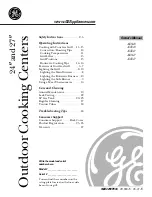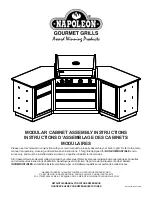
ISTRUZIONI PER L’USO
I
OPERATION MANUAL AND INSTRUCTIONS
EN
• Always use the following personal protective equipment:
- Eye protection
-
Safety shoes
-
Hearing protection
-
Protective gloves against physical agents
-
Anti-vibration gloves, to be worn following a specially conducted survey of the daily exposure of the hand-arm system to vibration
-
Protective mask against physical agents according to the values found in the environmental/industrial hygiene survey.
• Make sure you are in a safe position, keeping proper balance at all times. A safe working position and a proper body posture
enable better control of the pneumatic tool in unexpected situations.
• Do not wear loose clothing or jewellery. Keep your hair, clothing and gloves away from moving parts. Loose clothing, jewellery,
and long hair can get caught in moving parts.
• Do not directly inhale the exhaust air, and prevent it from getting into your eyes. The exhaust air of the pneumatic tool can
contain water, oil, metal particles and impurities, which may cause hazards.
PNEUMATIC TOOL USE AND CARE
• Use clamping devices or a vice to secure and support the workpiece. Holding the workpiece by hand or against your body will
not allow for safe operation of the pneumatic tool.
• Do not overload the pneumatic tool. Use the pneumatic tool intended for your work only.
• Always check that the machine is free from defects. Do not use a pneumatic tool that has a defective On/Off switch. A pneumatic
tool that can no longer be stopped or started is dangerous and must be repaired.
• Disconnect the air supply before making adjustments, changing accessories, or placing the pneumatic tool aside. This safety
measure prevents accidental starting of the pneumatic tool.
• Store idle pneumatic tools out of the reach of children. Do not allow persons unfamiliar with these instructions to operate the
pneumatic tool.
• Maintain the pneumatic tool with care. Check for misalignment or binding of moving parts, breakage or damage of parts and any
other condition that may affect the operation of the pneumatic tool. Have damaged parts repaired before using the pneumatic
tool.
• Keep cutting tools sharp and clean. Properly maintained cutting tools with sharp cutting edges are less likely to bind and are
easier to control.
• Do not modify the pneumatic tool. This can reduce the effectiveness of safety measures and increase operator risk.
• Have the pneumatic tool repaired only through a trained repair person and only using original replacement parts.
AIR DRILL SAFETY
• Make sure that the nameplate is readable; get a replacement nameplate from the manufacturer, if need be.
• If the cutting tool or the workpiece should break, loose parts may be thrown at high speed.
• Operators and maintenance personnel should be physically able to handle the weight and power of the pneumatic tool.
• It is important to be prepared for unexpected movements of the pneumatic tool resulting from a jammed or broken cutting tool.
Maintain a firm grip on the pneumatic tool and position your body and arms to allow you to resist such movements. These
precautions can prevent injuries.
• The pneumatic tool may get jammed if:
- The pneumatic tool is overloaded
- The cutting tool gets jammed in the workpiece
- The cutting tool thoroughly crosses the work material
• Keep your hands away from the chuck and cutting tool: you may hurt yourself.
• Make sure that the direction of rotation of the air drill is fit for the cutting tool being used.
• Turn off the tool in case of air supply failure or low operating pressure. Check the operating pressure; turn on the tool again when
optimal operating pressure is resumed.
• When using the pneumatic tool, the operator can experience discomfort in the hands, arms, shoulders, or neck area. Adopt a
Summary of Contents for 1931CD10
Page 1: ...1931CD10 Operation manual and instructions ...
Page 2: ......

























